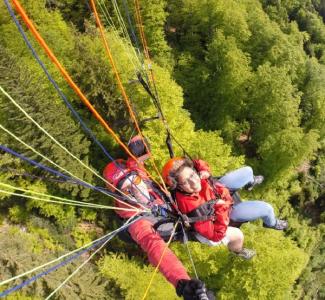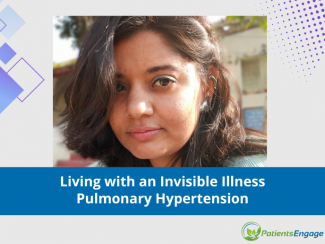
Breast cancer survivor Parul Banka wants to inform and inspire others through her own example about leading a physically active lifestyle, especially after cancer, to manage pain, fatigue, improve muscle strength and regain confidence.
Physical activity played a massive role in helping me recuperate from the harsh side effects of the cancer treatment. It helped me with stress management, regaining my strength and rebuilding a life after cancer. There is increasing scientific evidence that staying physically active after cancer can help you manage several side effects of the treatment as well as it can have an impact on the recurrence of some cancers, including breast cancer. Of course, everyone benefits from a physically active lifestyle but in the case of cancer, it can specifically help you to:
- Manage stress through release of happy hormones or endorphins
- Improve muscle strength – Some cancer treatments cause tremendous muscle weakness and physical activity helps to improve muscle strength.
- Improve bone density – Some cancer treatments impact bone density and in addition to medicines, physical exercise, specifically resistance training helps to improve bone density. I got osteopenia because of the treatment I had and therefore I do weight bearing exercises so that my bone density does not deteriorate further and hopefully builds up over time.
- Release built up emotions – I really enjoy body combat classes as I find them a great way to release frustration or even anger. I must mention that some of these workouts are heavy, especially the ones which help you rebuild muscle and improve bone density, for the bodies that have been through the cancer trauma and therefore, you must exercise under proper supervision.
- Help you regain confidence – Cancer has potential to destroy our self-confidence, partially or completely. We are no longer sure of what our bodies can do. Some people also feel that somehow their bodies have let them down. Physical activity is a great way to gauge our fitness and stamina levels. Even the tiniest improvement goes a long way to build our confidence.
- Manage pain – I have slight lymphedema in my left arm. I also have severe scar tissue build up from a mix of surgery and radiation therapy. I don’t need to wear a sleeve but I must make sure that I exercise regularly, otherwise my arm gets stiff and the pain can be excruciating. Whilst I am mostly disciplined about exercise, I do specific lymphedema exercises at home on days when I do not have access to my fitness centre or my fitness instructor like when I am travelling.
- Manage fatigue – Cancer fatigue can be a nightmare. In case of normal fatigue, people feel better as they catch up on rest. But in the case of cancer fatigue, that does not necessarily happen. My oncologist advised me that no matter how fatigued I feel, I must get out and exercise; at least I must go for a walk. It would certainly make me feel better because of the endorphins released as well as reduce fatigue. It may sound counter-intuitive: going out for a walk when I can barely pull myself out of the bed but it always works. Of course, I am careful that I do not do heavy exercises, but a little exercise has always been helpful.
- Manage depression – Some cancer treatments, especially the hormonal ones, cause depression. Anyhow, many cancer patients suffer from depression at some point in their cancer journey. Physical activity helps to alleviate depression. When depression is under control, people will have more energy and enthusiasm to act and get on with their lives.
- Help you feel socially engaged – It is very easy to feel isolated during cancer treatment…. here we are dealing with hospital appointments and everyone else we know seems to be getting on with their lives! Does that sound familiar? When you go out and exercise, you have the opportunity to meet new people who can also help you deal with the feeling of isolation.
Recovering Muscle Strength after Active Cancer Treatment:
After finishing the active cancer treatment that ran over 15 months, I began the slow process of building muscle strength. In the beginning of this process, my muscles were so weak from the treatment that I could walk neither up or down the stairs nor even bend my knees. It was so because my glutes were too weak to even support the regular movements like walking up and down the stairs.
Similarly, the rest of the muscle groups like the ones in my arms and the core got completely messed up too. My arms could lift only two porcelain dinner plates at one time. Any more weight was too much; I could no longer lift basic objects like a laptop, an electric iron or a kettle. My hands were too weak and the grip too poor, so I kept dropping my phone; no wonder my phone died soon after! My core muscles failed to support me when I would stand; I lost balance with the slightest movement while standing in a bus or train - like when it would careen or take a turn. I recently found out through a major cancer charity that several cancer patients and survivors shy away from going out because they are not sure if they will have access to a toilet whenever they want it. Weakening of urinary bladder muscles is a major factor that leads to this situation.
I was 35 but my body had suddenly become several times older within a few months. While I had managed to survive cancer, the treatment left me unable to do anything much at all. Staying in a vegetative state after putting in all the effort to survive cancer seemed like such a waste of the effort that I had put in to get through the ordeal. Building my strength back was the only rational and practical option.
I started my recovery with low impact exercises, mostly swimming, walking, then moved on to pilates and exercising without weights.
Gradually, as my strength improved, I moved to combat and heavier resistance training. I did low impact exercises for almost two years before I could do any combat at all. I still find it challenging to complete all the tracks in my group fitness class whereas everyone else in the class can but I guess that matters little because the only person I am competing against is me. So, it is important to take it easy and build it up from wherever you are.
You can build an active life style in many ways – of course there is the option to join a fitness centre where you can swim, do weight training or a variety of other exercises. However, there are several other cheaper options as well. There are lots of workouts that you can do at home with very little equipment. When I say very little, I am referring to a floor mat and a set of resistance bands. There are many exercises which do not even require resistance bands. Just a mat is sufficient – like core exercises.
There are several other exercises that do not require any equipment at all – squats and lunges fall in this category. The only thing that I will emphasise again is the need to exercise under supervision of a physiotherapist or a qualified fitness trainer and as per the advice of your doctor. Cancer and its treatment is likely to have changed your body and therefore what you are able to do post-treatment can be massively different from the pre-treatment times. Even if you have been lazy about exercising in your pre-cancer life, starting now is a good idea.
Not knowing how a specific exercise impacts your body can do more damage than good as I learnt the hard way. I also found that understanding the basics of exercise helped a lot to prevent injuries and to maximise the benefits of my exercise regime.
The recommendation is to do at least 30 minutes of exercise 5 times a week. These 30 minutes needn’t be in one lot….you can break it down into shorter 10 or 15 minutes exercise slots.
Two weeks ago, I came back home from my group fitness class; I was beaming when I shared with my husband Abhishek, “Today I was not the weakest person in my fitness class”. I had worked out for three years before I could say this. During those three years, I had been able to do little as compared to the other people in my fitness class. There were days when despite doing little, I was so exhausted that I completely crashed for several days afterwards. However, no matter how demotivating it felt, I kept going back. I kept hoping that tomorrow would be better and continued working towards wellness, one day at a time. While I had been mainly competing against myself, it was heartening to see how far I had come. I have recently started body pump classes and I feel great!
Staying Active During Treatment
It is also important to note that it is essential to keep active during the treatment. Walking is a great option. Whilst you need to be careful about ‘how much’ you do, being physically inactive is the most unhelpful option. Remember that you can buy or substitute most of the things in this world but health is something you cannot buy, no matter how hard you try. An experience like cancer affirms how important it is to look after our bodies.
I hope that this was enough information and inspiration for you to get out and start exercising. Give it a go; you will not regret it I promise.
(London based Parul Banka has authored ‘My Cancer Journey - A rendezvous with myself’ in which she candidly narrates her memoirs with an aggressive grade III breast cancer.)






